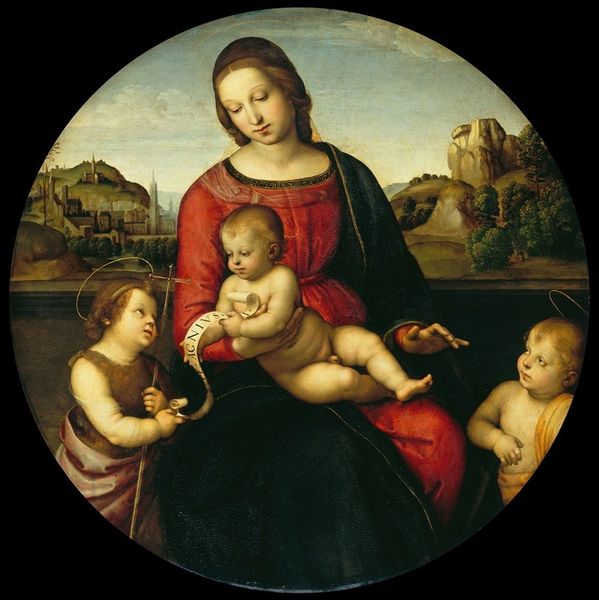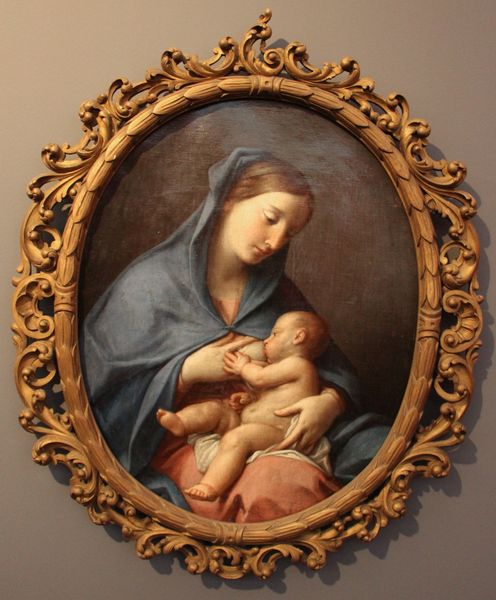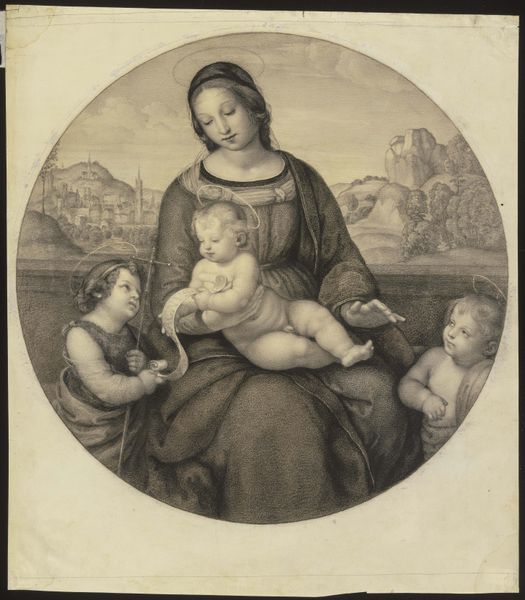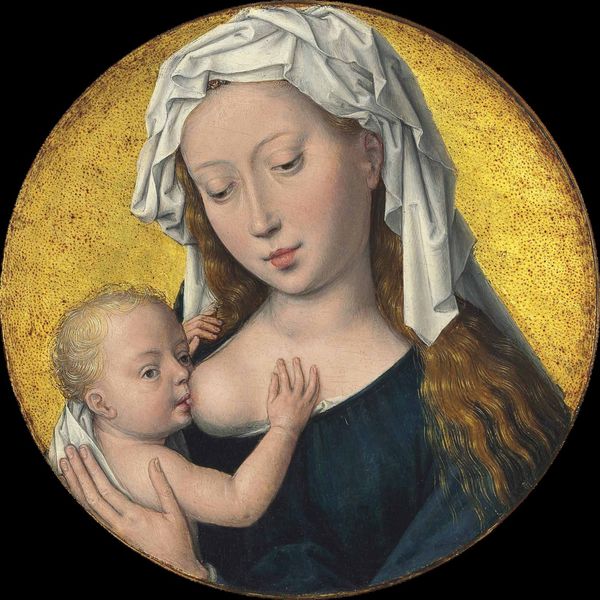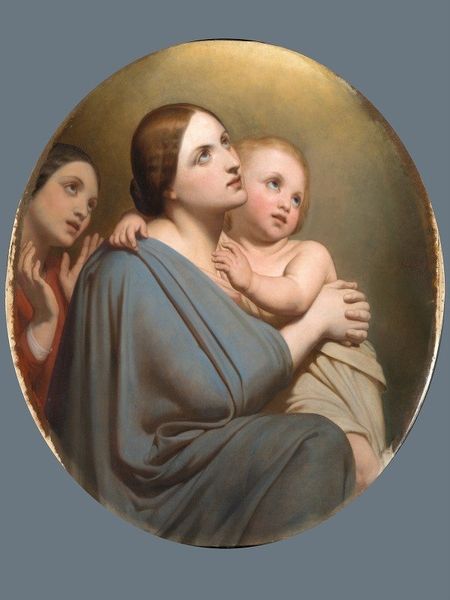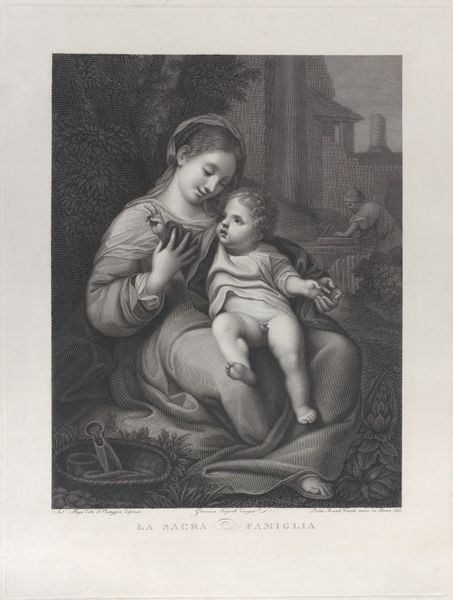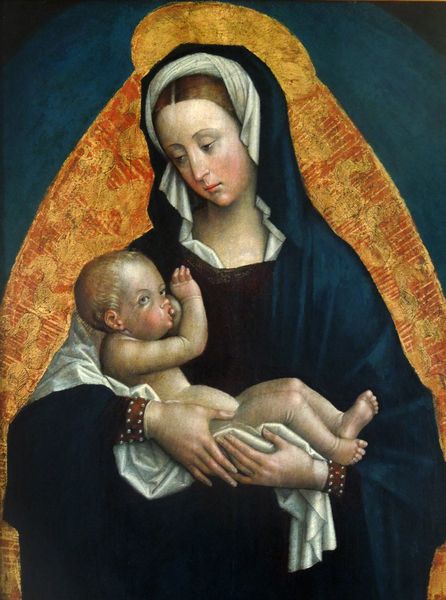
tempera, painting
#
portrait
#
tempera
#
painting
#
figuration
#
madonna
#
child
#
italian-renaissance
#
angel
Dimensions: Diameter 38 3/4 in. (98.4 cm)
Copyright: Public Domain
Curator: Here we have Domenico Ghirlandaio’s "Madonna and Child with Angels," likely painted between 1469 and 1494. It’s tempera on a wood panel, a beautiful example of the Italian Renaissance style currently residing at the Metropolitan Museum of Art. Editor: Immediately, I'm struck by the overall coolness. The colour palette creates a subdued and rather contemplative atmosphere. What intrigues me most, though, is how Ghirlandaio renders such regal figures with what seems like everyday textures. Curator: Absolutely, it's interesting to note the semiotic arrangement. The tondo shape and the central placement of Mary visually concentrate our attention, the child she presents serving as an allegorical focus on the possibility of redemption. Editor: And yet, if we examine it from a material perspective, consider the labor involved in preparing the panel, grinding pigments for tempera. Tempera, unlike oil, dries quickly and is unforgiving. There is a level of skill here that goes unnoticed if we’re only contemplating redemption. These materials—wood, pigment—would have been precious, impacting not only the visual result but how people perceived this family’s commission and by extension their values. Curator: Indeed, the visual organization reflects its period. Take the drapery—the fall of the material is depicted with scientific precision, but rendered to create elegant linearity, adding rhythmic structure and leading the viewer's gaze through different symbolic passages across the pictorial plane. It brings a sacred naturalism. Editor: To see Ghirlandaio working within those traditions while also attending to the more terrestrial elements reveals so much about the context for creativity. How did contemporary craftsmanship support painters who had little control over securing materials? The way his technique mediates social concerns within established motifs is fascinating. Curator: It showcases an artist completely attuned to both earthly realities and conceptual purity. This piece is not only beautiful but structurally impressive— a marriage of geometric forms, the naturalism of Renaissance aesthetic aims, and religious symbolism, inviting endless critical approaches. Editor: It really highlights how a work rooted in familiar iconography can yield profound insights when we attend to its tactile and economic histories—adding so many enriching, layered meanings to Ghirlandaio's design.
Comments
No comments
Be the first to comment and join the conversation on the ultimate creative platform.
